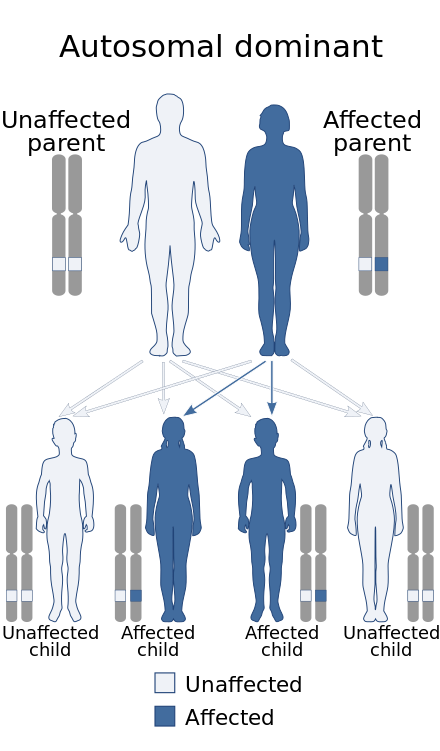Marfan Syndrome
Marfan syndrome (MFS) is a multi-systemic genetic disorder affecting connective tissue, characterised by a tall, thin build, long limbs, and flexible joints. The most serious complications involve the cardiovascular system, with increased risks of mitral valve prolapse and aortic aneurysm.
This condition results from a mutation in the FBN1 gene, which affects fibrillin production and leads to abnormal connective tissue.

Signs and Symptoms
Skeletal System
Individuals with Marfan syndrome often have noticeable skeletal abnormalities, such as long limbs and fingers (arachnodactyly), scoliosis, and pectus deformities. They may also have joint hypermobility, flat feet, and a high-arched palate.
These features can result in pain and early osteoarthritis.

Eyes
Eye involvement includes lens dislocation (ectopia lentis), myopia, and a higher risk of early glaucoma and cataracts. Lens dislocation occurs due to the weakness in the ciliary zonules that suspend the lens within the eye.

Cardiovascular System
Cardiovascular complications are the most severe aspects of Marfan syndrome. These include aortic dilation, aortic aneurysm, mitral valve prolapse, and aortic dissection.
Symptoms can include fatigue, shortness of breath, palpitations, and chest pain. Aortic dissection, in particular, can be life-threatening.
Lungs
Pulmonary complications such as spontaneous pneumothorax, obstructive lung disease, and sleep apnoea are also seen in Marfan syndrome. These can lead to significant respiratory issues.
Nervous System
Dural ectasia, a condition where the dura mater around the spinal cord stretches and weakens, is common in Marfan syndrome. It can cause lower back pain, abdominal pain, and neurological symptoms in the lower extremities.
Genetics
Marfan syndrome is an autosomal dominant disorder, meaning each affected parent has a 50% chance of passing the mutation to their children. About 75% of cases are inherited, while 25% are due to new mutations.

Pathogenesis
The disorder is caused by mutations in the FBN1 gene on chromosome 15, which encodes the protein fibrillin-1. This protein is very important for the formation and maintenance of elastic fibres in connective tissue.
The defective fibrillin-1 leads to weakened connective tissue, particularly affecting the aorta, eyes, and ligaments.

Diagnosis
Diagnosis is often based on the Ghent criteria, which include family history, genetic testing, and clinical signs. Major criteria include aortic root dilation and ectopia lentis, while minor criteria involve skeletal and other system manifestations.
Genetic testing can confirm mutations in the FBN1 gene.

Treatment
There is no cure for Marfan syndrome, but management focuses on monitoring and treating complications. Medications such as beta blockers and ACE inhibitors help manage cardiovascular symptoms.
Regular monitoring of the aorta and heart valves is very important. Surgery may be necessary for severe cardiovascular complications.
Physical activity should be moderated to avoid stressing the aorta.
Prognosis
With appropriate treatment and monitoring, individuals with Marfan syndrome can have a normal life expectancy. Early detection and management of cardiovascular issues are key to improving outcomes.
Self-assessment MCQs (single best answer)
Which gene mutation is responsible for Marfan syndrome?
What is the inheritance pattern of Marfan syndrome?
Which cardiovascular complication is most commonly associated with Marfan syndrome?
What ocular symptom is a hallmark of Marfan syndrome?
Which of the following is NOT a common skeletal feature of Marfan syndrome?
What is the recommended treatment to manage cardiovascular symptoms in Marfan syndrome?
Which diagnostic criteria set is commonly used for diagnosing Marfan syndrome?
Which of the following activities is generally considered high-risk for individuals with Marfan syndrome?
Which major system is NOT typically affected by Marfan syndrome?
Which of the following is a major criterion for diagnosing Marfan syndrome in the absence of a family history?
Dentaljuce
Dentaljuce provides Enhanced Continuing Professional Development (CPD) with GDC-approved Certificates for dental professionals worldwide.
Founded in 2009 by the award-winning Masters team from the School of Dentistry at the University of Birmingham, Dentaljuce has established itself as the leading platform for online CPD.
With over 100 high-quality online courses available for a single annual membership fee, Dentaljuce offers comprehensive e-learning designed for busy dental professionals.
The courses cover a complete range of topics, from clinical skills to patient communication, and are suitable for dentists, nurses, hygienists, therapists, students, and practice managers.
Dentaljuce features Dr. Aiden, a dentally trained AI-powered personal tutor available 24/7 to assist with queries and provide guidance through complex topics, enhancing the learning experience.
Check out our range of courses, or sign up now!


